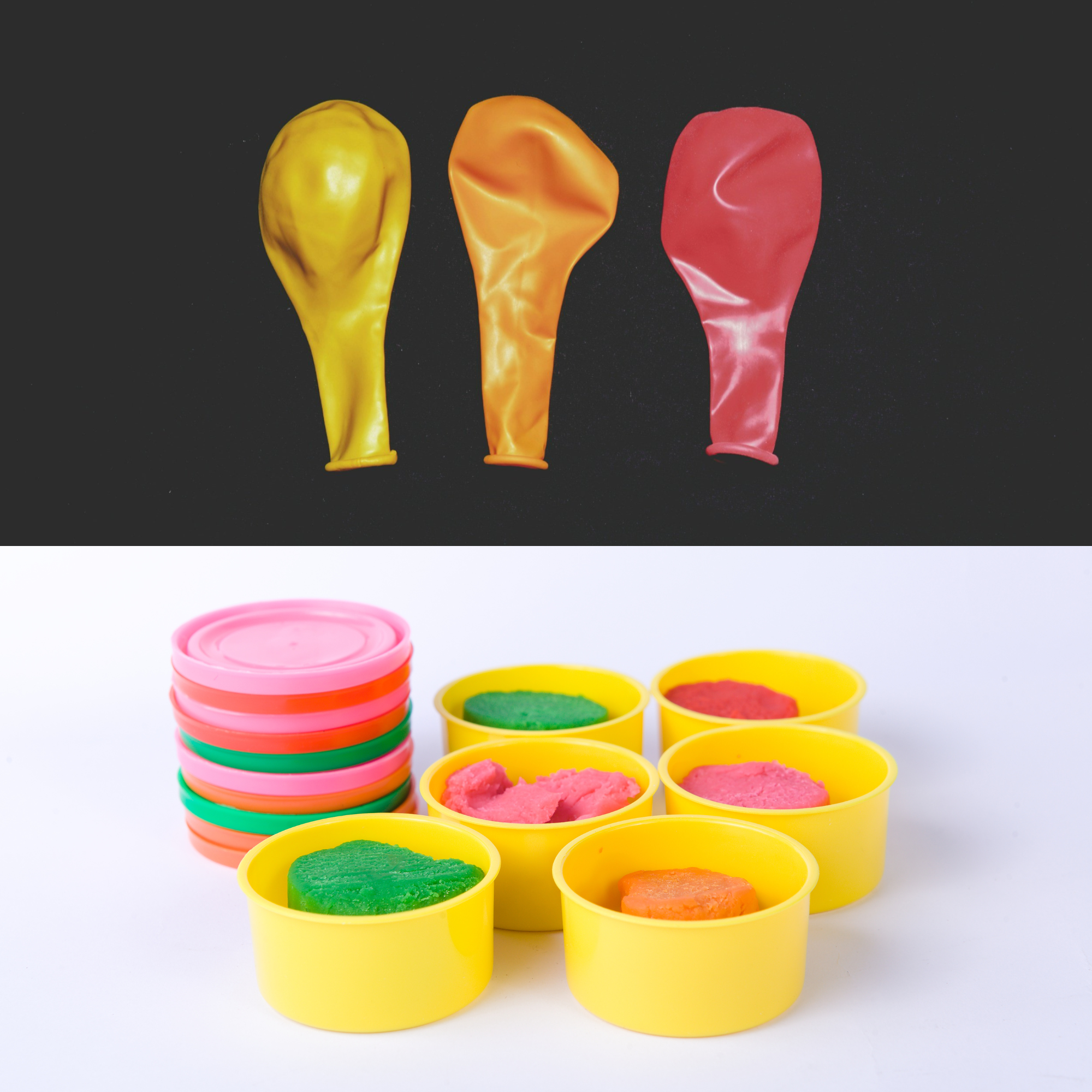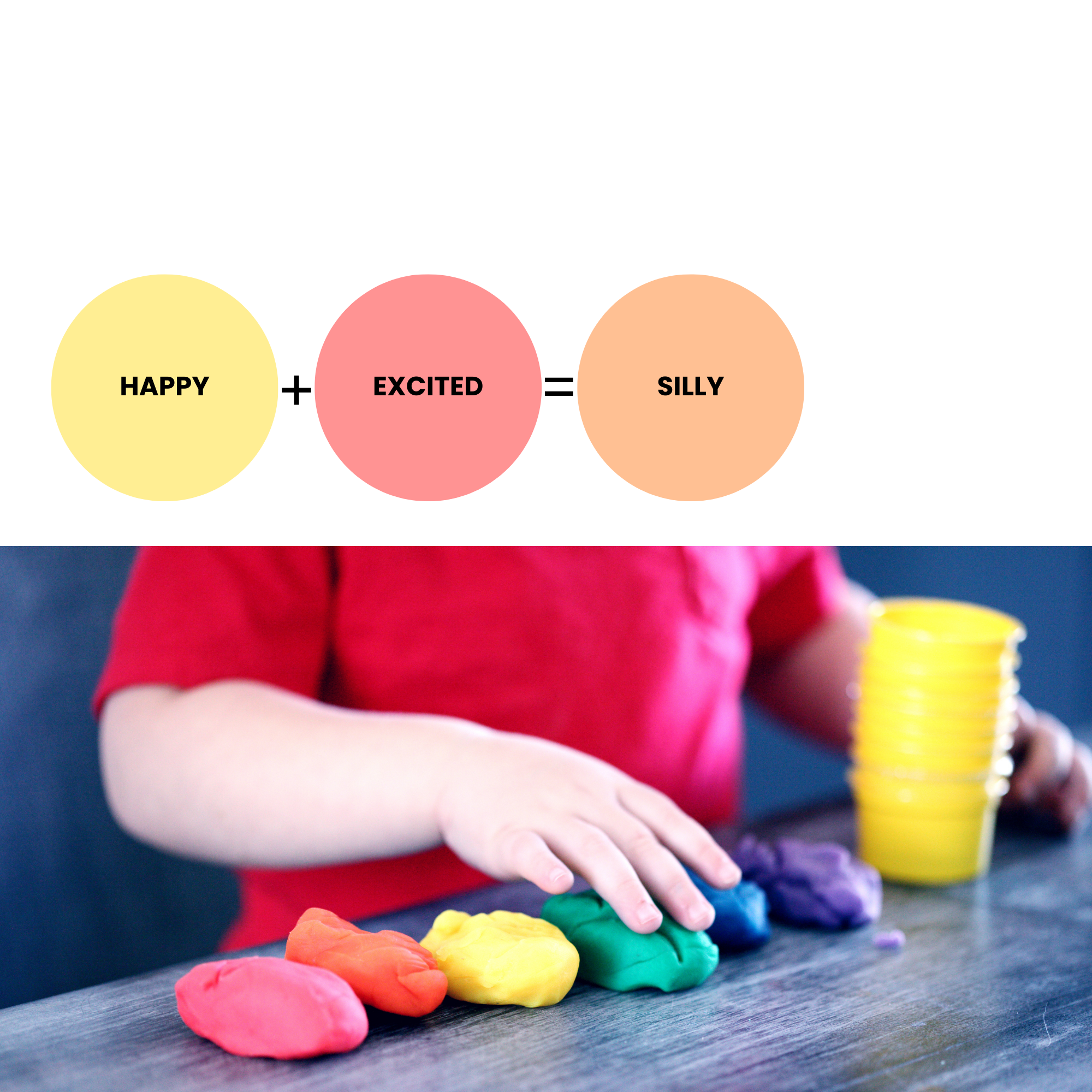Therapeutic Activities with Play-Doh
5 Ways to Use Modeling Dough as a Social and Emotional Learning Tool
Modeling dough is an open-ended play material which means that it doesn’t have a fixed purpose or specific way to be used. Rather, open-ended play materials foster creativity and independent thinking by encouraging kids to make decisions about how they want to play. In a therapeutic setting, encouraging and observing open-ended, child-directed play can offer valuable insight. This material can also be used in a more instructional way as a tactile sensory tool for exploring therapeutic concepts. Read on for 5 of our favorite Play-Doh activities to use in between intervals of open-ended play!
Stress Ball(oon)
Put Play-Doh inside a balloon to create an easy sensory stress ball! Squeezing the ball can improve focus and release tension. These stress balls are discreet, fun, and portable, which makes them a great tool for independent emotional regulation.
Depending on the age and impulses of the kid, make sure to review guidelines around this activity. For example: The ball is for squeezing, not throwing. If it becomes a nuisance in class, it might get taken away. The ball is not for chewing or putting in your mouth.
2. Mixed Emotions
Our feelings can be complex! Exploring mixed emotions helps kids understand that it's normal to feel “jumbled up,” and gives them the tools to sort themselves out. Encourage the development of emotional literacy through this hands-on color-mixing activity!
If I am feeling happy (yellow dough) and excited (red dough) at the same time what happens? Mix the colors together to make something new: silly (orange dough)! What other emotions or behaviors get mixed together sometimes?
Visit our Therapeutic Activities tab to explore accompanying resources.
3. Build-It Prompts
This therapeutic activity is a great way to roll the dice and find constructive inspiration! Use Play-Doh to build the prompts and after each turn, try these talking points: What did you build? Why did you choose to build this? Would you change anything about your creation? If you could take a magic wand and make this creation real, would you do it? Why or why not?
Find this resource and more in our Therapeutic Activities tab!
4. Birthday Cake
Build a birthday cake with Play-Doh and practice blowing out candles with deep, intentional breaths. This is a fun way to practice mindful breathing. Take mindfulness practice one step further and encourage kids to think of something they are grateful for, or “a wish come true,” as they blow out each candle.
Pair this activity with our Breathing Techniques printable.
5. Squash It!
The physical act of squashing negative beliefs, ruminating thoughts, or grudges can have a big impact. Ask kids to make something (anything!) out of Play-Doh that represents a thought, belief, or behavior that they would like to squash, and then squash it!
Then, talk about what it means. Squashing something doesn’t make it disappear, but it does change it. What is the significance of change? Can you move on from an argument? Can you replace negative self-talk with something more productive? Can you try something new?
What happens if someone else makes you feel squashed? How do you recover?
Play-Doh is pliable and a great medium to explore resilience and flexibility.
Explore our recommended toys and materials for PLAY THERAPY and ART THERAPY.





